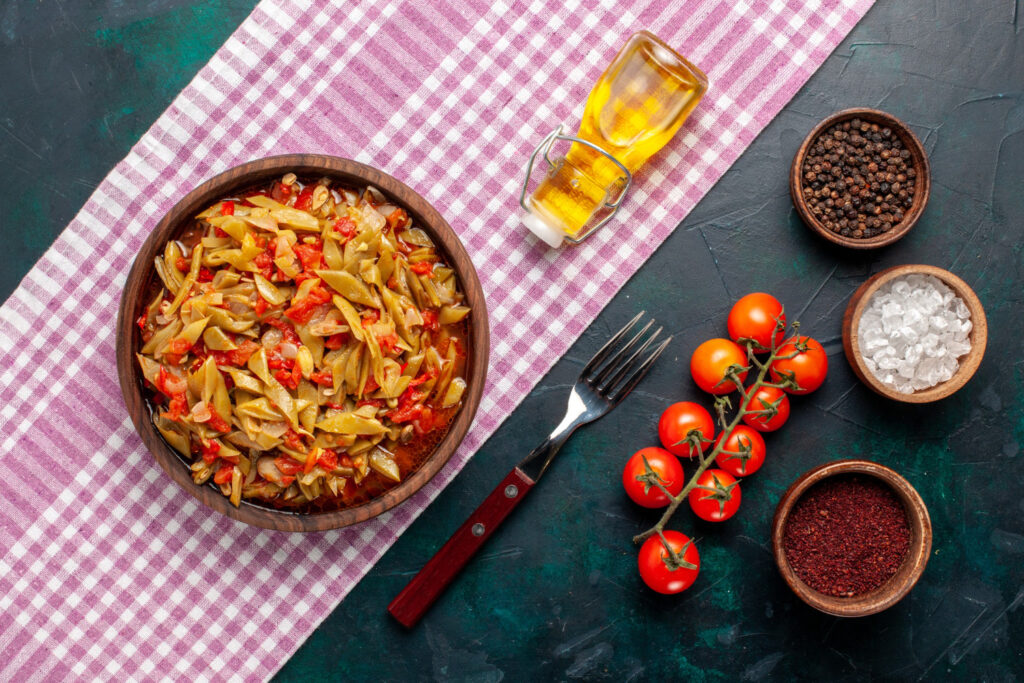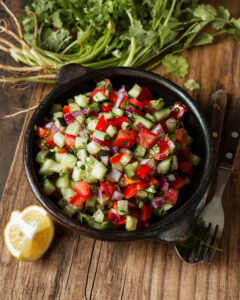Introduction
Who doesn’t love a plate of delicious pasta? When combined with a medley of fresh vegetables, it becomes not just a meal, but a powerhouse of nutrients that caters to both the taste buds and the body’s needs. If you’ve been looking for a way to enjoy a hearty yet healthy dish, look no further than this pasta with veggies recipe.Pasta is a beloved staple in many households, and for good reason. It’s quick to cook, incredibly versatile, and pairs beautifully with a wide range of ingredients. Vegetables add color, texture, and essential vitamins, making this dish a complete meal that’s both satisfying and nutritious.In this article, we’ll provide you with a comprehensive guide to crafting the perfect pasta with veggies recipe. You’ll learn how to choose the right ingredients, follow stepbystep instructions for preparation, and discover tips and tricks to customize the dish to your liking. Whether you’re a seasoned cook or a kitchen novice, our guide will ensure you can create a tasty, balanced meal with ease. So, let’s dive in and transform your mealtime with this simple yet flavorful recipe.
Section 1: Benefits of Pasta with Veggies
Health Benefits
One of the standout features of a pasta with veggies recipe is its impressive nutritional profile. Vegetables are rich in essential vitamins, minerals, and fiber, which contribute to overall health and wellbeing. Adding a variety of colorful vegetables to your pasta not only makes the dish visually appealing but also boosts its nutritional value. For instance, bell peppers are high in vitamin C, spinach offers iron and folate, and broccoli provides a good dose of vitamin K and calcium. Incorporating these vegetables into your pasta ensures you’re getting a balanced meal that supports your body’s needs.
Versatility
The beauty of a pasta with veggies recipe lies in its versatility. This dish can be easily adapted to suit various dietary preferences and available ingredients. Whether you’re vegetarian, vegan, or looking to include some protein, pasta with veggies can be customized to meet your needs. You can use whole grain or glutenfree pasta for a healthier twist, or experiment with different types of vegetables based on what’s in season. From hearty root vegetables in the winter to light, fresh zucchini in the summer, the possibilities are endless, making this dish a yearround favorite.
Ease of Preparation
In today’s fastpaced world, finding time to prepare a healthy meal can be challenging. However, a pasta with veggies recipe is an ideal solution for busy individuals and families. The preparation is straightforward and quick, allowing you to create a nutritious meal without spending hours in the kitchen. Simply cook your pasta, sauté your chosen vegetables, and combine them for a delicious, wholesome dish. This ease of preparation not only saves time but also encourages healthy eating habits, as it proves that cooking a balanced meal doesn’t have to be complicated or timeconsuming.
Section 2: Choosing the Right Ingredients
Pasta Types
The foundation of any pasta with veggies recipe is, of course, the pasta itself. There are numerous types of pasta you can use, each bringing a different texture and experience to the dish. Spaghetti and linguine are great for a classic feel, while penne and fusilli are perfect for holding onto chunky vegetable sauces. If you’re looking for a healthier option, consider whole grain pasta, which adds extra fiber and nutrients. For those with dietary restrictions, glutenfree pasta made from rice, quinoa, or legumes can be a fantastic alternative without compromising on taste or texture.
Vegetable Selection
Selecting the right vegetables is crucial for a successful pasta with veggies recipe. Aim for a colorful mix to ensure a variety of nutrients and flavors. Bell peppers add sweetness and crunch, while zucchini and spinach provide a mild, tender element. Broccoli florets offer a satisfying bite, and cherry tomatoes burst with juicy, tangy flavor. Don’t be afraid to mix and match based on what’s in season or what you have on hand. The key is to balance different textures and tastes to create a harmonious and visually appealing dish.
Complementary Ingredients
To elevate your pasta with veggies recipe, consider adding complementary ingredients that enhance the flavors and add depth to the dish. Aromatics like garlic and onions are essential, providing a robust base flavor. Fresh herbs such as basil, parsley, and oregano bring brightness and complexity. Olive oil is a must for sautéing vegetables and adding a silky finish to the pasta. Finally, a sprinkle of cheese like Parmesan or feta can add a savory, creamy element that ties everything together beautifully. These ingredients not only complement the vegetables but also add layers of flavor that make the dish truly irresistible.
Section 3: StepbyStep Recipe
Ingredients List
To make a delicious pasta with veggies recipe, gather the following ingredients:
12 ounces of pasta (spaghetti, penne, fusilli, or your choice)
2 tablespoons of olive oil
3 cloves of garlic, minced
1 medium onion, diced
1 bell pepper (any color), sliced
1 zucchini, sliced into halfmoons
1 cup broccoli florets
1 cup cherry tomatoes, halved
2 cups fresh spinach leaves
Salt and pepper to taste
1 teaspoon dried oregano
1 teaspoon dried basil
1/4 cup grated Parmesan cheese (optional)
Fresh basil or parsley for garnish (optional)
Preparation Steps
Cooking the Pasta
1. Boil Water: Fill a large pot with water, add a pinch of salt, and bring it to a boil.
2. Cook the Pasta: Add the pasta and cook according to the package instructions until al dente, usually about 810 minutes. Stir occasionally to prevent sticking.
3. Drain and Reserve: Drain the pasta, reserving a cup of the pasta water, and set aside.
Preparing the Vegetables
1. Wash and Cut: Rinse all the vegetables thoroughly. Slice the bell pepper into thin strips, cut the zucchini into halfmoons, break the broccoli into small florets, and halve the cherry tomatoes.
2. Sauté Aromatics: Heat the olive oil in a large skillet over medium heat. Add the minced garlic and diced onion, sautéing until fragrant and the onion is translucent, about 23 minutes.
3. Cook the Vegetables: Add the bell pepper, zucchini, and broccoli to the skillet. Sauté for 57 minutes until the vegetables are tender but still crisp.
4. Add Spinach and Tomatoes: Stir in the cherry tomatoes and spinach leaves, cooking for another 23 minutes until the spinach is wilted and the tomatoes are slightly softened.
Combining Ingredients
1. Mix Pasta and Veggies: Add the cooked pasta to the skillet with the vegetables. Toss everything together, adding a bit of the reserved pasta water to help combine and coat the pasta evenly.
2. Season: Sprinkle with dried oregano, dried basil, salt, and pepper. Toss again to ensure all ingredients are well mixed and seasoned.
Finishing Touches
1. Cheese and Herbs: If desired, sprinkle grated Parmesan cheese over the top and toss to combine. Garnish with fresh basil or parsley for added flavor and a pop of color.
2. Serve: Transfer the pasta to a serving dish or individual plates. Serve immediately, enjoying the fresh, vibrant flavors of your homemade pasta with veggies recipe.
Section 4: Tips and Tricks
Cooking Tips
When making a pasta with veggies recipe, a few simple techniques can make a big difference:
1. Avoid Overcooking Pasta and Vegetables: Cook the pasta al dente, meaning it should be firm to the bite. This prevents it from becoming mushy when combined with the vegetables. Similarly, sauté the vegetables until they are tender but still crisp. Overcooked vegetables can lose their texture and flavor.
2. Balancing Flavors: Taste as you go to ensure the flavors are wellbalanced. Adjust the seasoning with salt, pepper, and herbs to suit your palate. If the dish feels bland, a squeeze of lemon juice or a dash of vinegar can brighten the flavors.
3. Creating Creamy or Saucy Consistency: If you prefer a creamier texture without using heavy cream, add a bit of the reserved pasta water when mixing the pasta and vegetables. The starchy water helps create a silky sauce that clings to the pasta. You can also stir in a spoonful of ricotta or Greek yogurt for added creaminess.
Time Saving Tips
To make your pasta with veggies recipe even more convenient:
1. Prepping Ingredients in Advance: Chop your vegetables ahead of time and store them in airtight containers in the fridge. This can significantly cut down on prep time when you’re ready to cook.
2. Using Frozen Vegetables: Frozen vegetables are a great alternative when you’re short on time or fresh produce. They are prewashed and precut, and they cook quickly. Just be sure to adjust the cooking time slightly as frozen vegetables can cook faster.
3. Quick Cooking Techniques: Use a large skillet to sauté your vegetables, which allows them to cook evenly and quickly. Also, consider cooking your pasta and vegetables simultaneously to save time.
Customization Ideas
Adapt your pasta with veggies recipe to meet various dietary needs and preferences:
1. Vegan: Omit the cheese and use nutritional yeast for a cheesy flavor. Opt for plantbased proteins like tofu or chickpeas if you want to add more substance.
2. LowCarb: Swap traditional pasta for zucchini noodles (zoodles) or spaghetti squash. These alternatives provide a similar texture with fewer carbohydrates and calories.
3. Personal Taste Preferences: Feel free to mix and match vegetables based on what you enjoy or have on hand. Add more herbs or spices to suit your flavor profile. For a protein boost, include grilled chicken, shrimp, or even beans.
Section 5: Variations and AddOns
Protein Additions
Enhance your pasta with veggies recipe by adding some protein to make it even more satisfying:
1. Grilled Chicken: Slice grilled chicken breast and toss it into the pasta for a lean protein boost. It adds a savory flavor that complements the vegetables.
2. Shrimp: Sauté shrimp with garlic and olive oil until they’re pink and tender. They pair perfectly with a variety of vegetables and add a touch of elegance to the dish.
3. Tofu: For a plantbased protein option, cube firm tofu and lightly fry it until golden. Tofu absorbs the flavors of the sauce and vegetables beautifully.
4. Chickpeas: Canned chickpeas are an easy addition. They add texture and are rich in protein and fiber, making your meal more nutritious and filling.
Sauce Options
Different sauces can transform your pasta with veggies recipe and keep it exciting:
1. Marinara: A classic tomatobased sauce that pairs well with most vegetables. It’s simple, flavorful, and a great base for additional herbs and spices.
2. Pesto: Made from fresh basil, garlic, pine nuts, Parmesan, and olive oil, pesto adds a vibrant and aromatic touch to the pasta. It’s especially delicious with cherry tomatoes and zucchini.
3. Garlic and Olive Oil: A light and simple option that lets the flavors of the vegetables shine. Sauté garlic in olive oil and toss it with the pasta and veggies.
4. Light Cream Sauce: Create a creamy sauce using a bit of milk or a dairyfree alternative thickened with flour or cornstarch. Add some Parmesan or nutritional yeast for extra flavor.
Seasonal Variations
Adapt your pasta with veggies recipe to highlight the best vegetables each season has to offer:
1. Spring: Use fresh peas, asparagus, and artichokes. These light and tender vegetables celebrate the freshness of spring.
2. Summer: Take advantage of vibrant summer produce like bell peppers, zucchini, eggplant, and cherry tomatoes. These vegetables are at their peak and add a burst of color and flavor.
3. Fall: Incorporate heartier vegetables like butternut squash, kale, and Brussels sprouts. Their rich flavors and textures make for a comforting and warming dish.
4. Winter: Use root vegetables like carrots, parsnips, and winter squash, along with hardy greens like spinach and Swiss chard. These ingredients provide a robust and satisfying meal during the colder months.
Section 6: Serving Suggestions
Presentation Tips
The way you present your pasta with veggies recipe can elevate the entire dining experience:
1. Use a Wide, Shallow Bowl: Serving pasta in a wide, shallow bowl allows the vegetables to be more visible, creating an appetizing presentation.
2. Garnish: Sprinkle fresh herbs like basil or parsley over the top. A light dusting of grated Parmesan or a drizzle of olive oil can add a finishing touch that looks as good as it tastes.
3. Color Contrast: Arrange the vegetables to highlight their vibrant colors. Placing contrasting colors next to each other, like red bell peppers and green spinach, makes the dish more visually appealing.
4. Layering: If using cheese, consider adding it in layers as you plate the pasta. This ensures even distribution and a delightful look.
Side Dishes
Complement your pasta with veggies recipe with these side dishes to create a wellrounded meal:
1. Green Salad: A simple green salad with a light vinaigrette pairs well with pasta. It adds a refreshing contrast to the warm, savory flavors of the dish.
2. Garlic Bread: Crispy garlic bread is a classic accompaniment. The crunch and garlic flavor enhance the overall meal experience.
3. Light Soup: A light, clear soup like a vegetable or minestrone soup complements the pasta without being too heavy. It’s a great starter that ties in well with the veggie theme.
Wine Pairing
Elevate your pasta with veggies recipe with the perfect wine pairing:
1. White Wine: A crisp, dry white wine like Sauvignon Blanc or Pinot Grigio complements the fresh flavors of the vegetables and the lightness of the pasta.
2. Red Wine: If you prefer red wine, opt for a light to mediumbodied variety like Pinot Noir. Its subtle fruitiness pairs well with the savory elements of the dish without overpowering it.
3. Rosé: A dry rosé is another excellent choice. Its light, refreshing qualities and slight acidity can balance the flavors of the pasta and vegetables beautifully.

Conclusion
Creating a delicious and nutritious meal doesn’t have to be complicated. Our pasta with veggies recipe showcases the perfect blend of flavors, textures, and nutrients, making it an ideal choice for any meal. We’ve discussed the numerous benefits, from health advantages and versatility to ease of preparation. You now have the knowledge to choose the right ingredients, follow stepbystep instructions, and apply useful tips to enhance your dish.We encourage you to try this pasta with veggies recipe and make it your own. Experiment with different vegetables, proteins, and sauces to suit your taste and dietary needs. The flexibility of this recipe means you can enjoy it yearround, always adapting it to what’s fresh and in season.Finally, we’d love to hear from you. Share your versions of the pasta with veggies recipe in the comments below. Subscribe to our newsletter for more delicious recipes and cooking tips, and follow us on social media to stay connected. Happy cooking!



